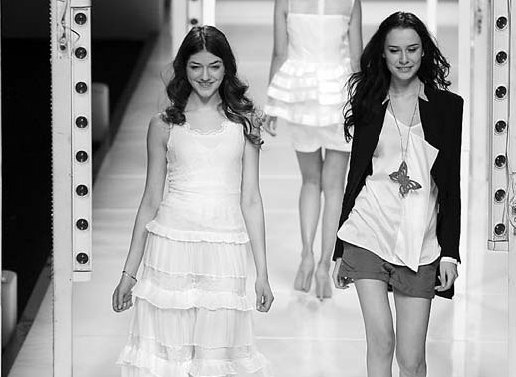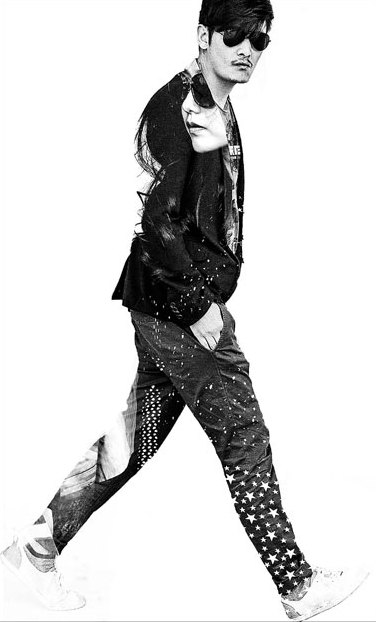Fashion you can touch
Updated: 2013-04-21 07:50
By Xu Junqian(China Daily)
|
|||||||
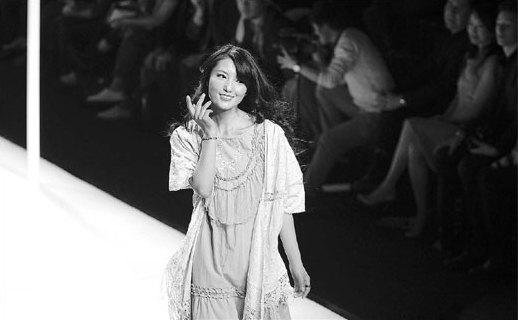
|
Top and above: With 10 of its most popular womenswear brands, Taobao launches its first "offline fashion show" in conjunction with Shanghai Fashion Week. The brands feature collections designed by online designer teams. Photos by Gao Erqiang / China Daily |
Stepping out from the computer screen, Taobao brings 10 popular designers to a live catwalk, Xu Junqian reports in Shanghai.
Fashion may not often capture mass attention in China, but one feature of the just-ended 2013 Autumn Winter Shanghai Fashion Week got plenty of notice. The pieces on display were not from big names such as Karl Lagerfeld, Raf Simons and Giorgio Armani, but the nameless, faceless young Chinese designers who have dressed the largest population of women in China in the past decade. Joined by 10 of the most popular womenswear brands that started from scratch on Taobao.com, the country's biggest online shopping bazaar launched its first "offline fashion show", running less than one hour, in conjunction with Shanghai Fashion Week.
Characterized by three themes - simple classic style, boyish style and sweet Japanese/South Korean style - the show has attracted an audience of about 600, Taobao says, mostly frequent, if not addictive, cyber-shoppers who were invited by the website.
Rather than reselling garments from wholesale markets, as most of the web stores on Taobao, the 10 brands joining the show all feature collections designed by their own designer teams and boast a minimum of tens of millions of yuan in annual sales.
"The sales number actually is not a requirement for a ticket to the show, but in the world of Taobao, you need to be that large to be able to afford a designer," says Shen Ting, marketing chief director of Taobao's womenswear department, and the co-organizer of the fashion show.
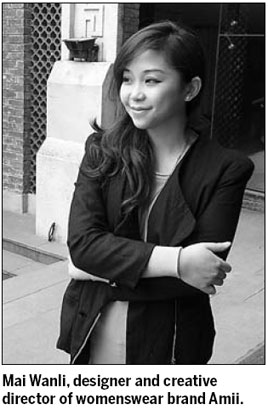
And for the first time, these most mysterious fashion designers stepped out of the cyber world.
"I never expected that my works would be walked on the runway," says Mai Wanli, the creative director of womenswear brand Amii, one of the featured lines.
A 32-year-old native of Foshan, Guangdong province, with a degree in fashion design, Mai had been working at a local "bricks-and-mortar" womenswear company for seven years, until two years ago when she decided that "the future of fashion lies in the Web world".
She now leads a team of about 20 young designers, who altogether produce at least 10 new pieces every week for Amii. The store features what Mai calls "off the rack, high quality, soft, body conscious clothes from fine fabrics like those from Chloe or Chanel". Mai says online fashion design is a much more demanding job than its offline counterpart, though the pay is similar.
"It's like playing a videotape of the real fashion world 10 times faster," she says. "That is not only because we need to put so many new pieces on the shelf every week, but also once you miss the pace (of fashion), your works die out every quickly."
To keep up, Mai and her team read whatever fashion magazines are available and watch fashion shows from the Big Four (fashion weeks in New York, London, Milan and Paris) whenever they are not doing design work.
Zheng Lei, the chief designer of Cutie Pigie, another womenswear brand on Taobao that took part in the fashion show, says his pace is even faster.
With 10 designers, 31-year-old Beijing native Zheng has spent his past four years producing sweet, cute fashion garments tailored for college students. He says he's "either thinking of designing or turning the designs into reality every single day", except for two weeks every year, the Spring Festival and the National Day Holiday.
"We upgrade our shelf three times a week, each time with about 100 new pieces," says Zheng.
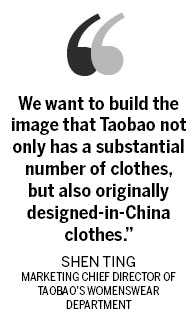
Ninety percent of the pieces sold at Cutie Pigie are designed by Zheng and his team, while the rest are from the wholesale market. A best-selling dress, sold at 300 yuan ($50) apiece, can generate 10,000 sales.
"This is the moment we are most happy, knowing our works will be worn by so many people," Zheng says.
Statistics from Taobao show that there are 1.3 million stores selling womenswear on the website. Up to 50 percent of the stores that have their own designers are on the list of the top 1,000 most popular stores.
Daily stock of womenswear on the website adds up to about 100 million pieces, among which 80,000 are new on the shelf.
"We want to build the image that Taobao not only has a substantial number of clothes, but also originally designed-in-China clothes," says Shen, the marketing chief.
Since its founding in 2003, the Hangzhou-based online shopping bazaar has been constantly accused of selling pirated or counterfeit products of world-renowned luxury or fashion brands. But designers said the situation is unfair to them.
"In the era of digital, it's very easy to be found out if we are copying. We learn from the big fashion designers and brands, but we design our own works," says Mai, the creative director of Amii.
Contact the writer at xujunqian@chinadaily.com.cn.
|
Zheng Lei, chief designer of womenswear label Cutie Pigie. Provided to China Daily |
(China Daily 04/21/2013 page13)
